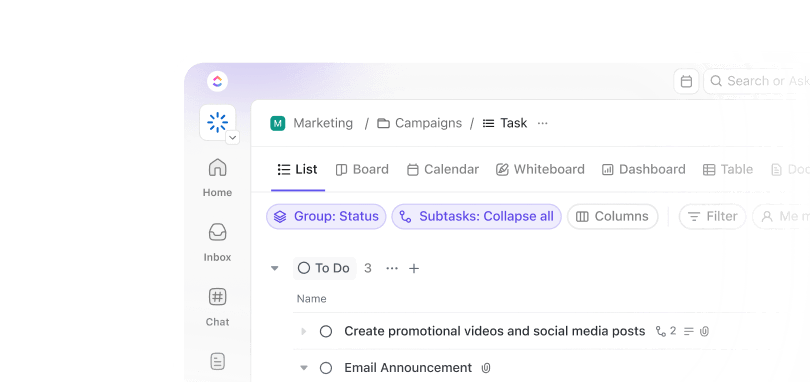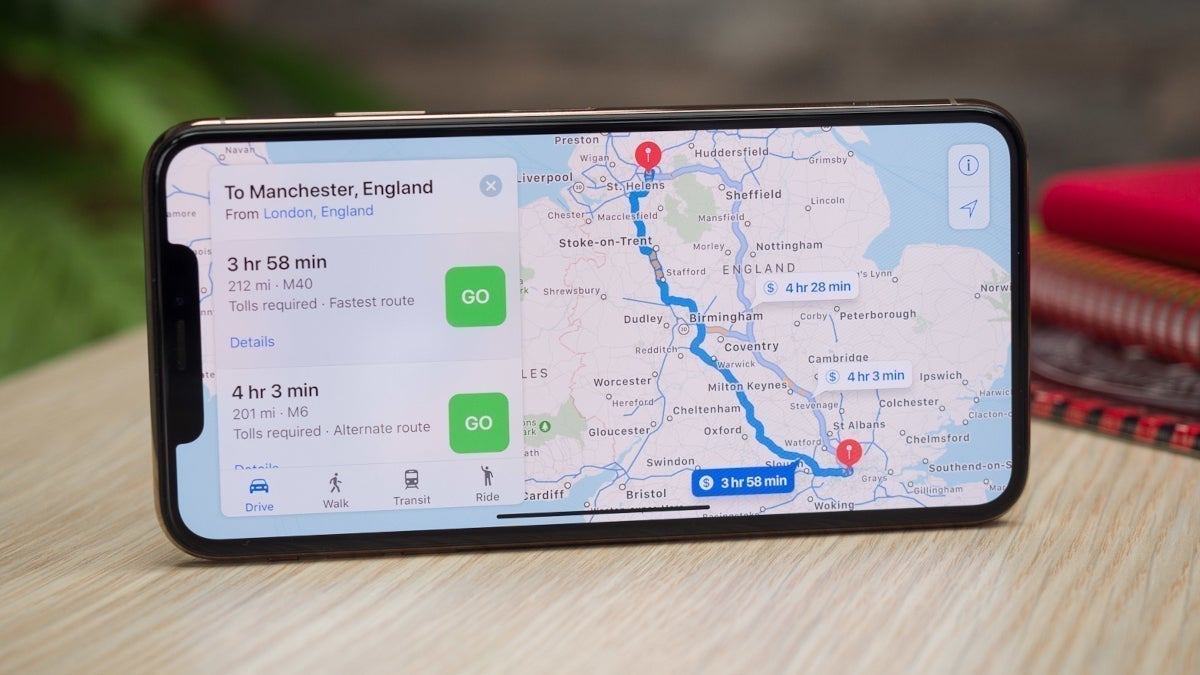It’s the end of the quarter, and your sales and marketing team is huddled around a whiteboard, tallying numbers and double-checking pipelines.
Some deals closed effortlessly, others fell through unexpectedly, and a few are lurking on the fence.
The team worked hard, but the results didn’t match their effort. Why?
A sales team can only go so far without a solid, repeatable process to support them. The key to success lies in sales process improvement. It helps you focus on the how behind every interaction to create a system that balances customer success with efficiency and personalization.
In this blog post, we’ll explore strategies and tools that can help you fine-tune your sales process and drive real, measurable results. 🎯
How to Improve Your Sales Process: Strategies and Tools
What Is Sales Process Improvement?
Sales process improvement is continuously optimizing your sales workflow to enhance efficiency, productivity, and revenue growth.
It’s a systematic approach that helps businesses:
✅ Identify inefficiencies in the sales cycle
✅ Implement targeted strategies to optimize performance
✅ Measure the impact of improvements to refine future sales efforts
With rising customer expectations and fierce competition, businesses must rethink their approach to the formal sales process. Improving your sales process can simplify workflows, reduce inefficiencies, and deliver a smoother, more satisfying customer experience.
The result? Happier clients, stronger relationships, and increased revenue opportunities.
Here’s a breakdown of the key components involved in sales process improvement:
- Analysis
- Mapping
- Goal setting
- Technology implementation
- Continuous monitoring
Signs Your Sales Process Needs Improvement
Even the most successful sales teams encounter roadblocks that compel them to revisit their approach.
But how can you tell when to upgrade your sales process?
The signs aren’t always obvious—they often show up as missed opportunities, stalled deals, or inefficiencies.
Here’s what you, as a sales manager, should watch out for. 👀
- Experiencing inconsistent sales performance: Fluctuations in sales results over time may indicate a lack of structure or clarity in the current sales process
- Falling short of revenue targets: Consistently missing revenue goals reveals underlying gaps in the sales process
- Facing team performance gaps: Disparities between top performers and other team members highlight neven application or understanding of the sales process
- Noticing declining conversion rates: Struggling to turn opportunities into closed deals often highlights misalignment with customer needs or engagement efforts
- Encountering stalled deals: Deals frequently stuck in the same stages reflect potential process bottlenecks or lack of clear next steps
- Experiencing extended sales cycles: Prolonged durations to close deals suggest obstacles within the sales process
- Over relying on spreadsheets: Heavy dependence on spreadsheets for managing sales data indicates a lack of integrated sales tools, leading to errors and limited collaboration
- Struggling to adapt to market changes: Difficulty responding to evolving market conditions or new products indicates a rigid or outdated sales process
🧠 Fun Fact: 81% of businesses agree that sales enablement improves the efficiency of revenue teams.
Benefits of Optimizing Your Sales Process
Optimizing your sales process isn’t just about hitting revenue targets—it’s about creating a system that:
✔ Empowers your sales team
✔ Strengthens customer relationships
✔ Drives sustainable growth
Here, we’ll explore why you should refine your sales approach. 📃
- Increased efficiency: Eliminating unnecessary steps, automating repetitive tasks, and streamlining workflows enables your team to focus on high-impact activities
- Elevated customer experience: Personalization and faster response times to customer needs lead to higher satisfaction and loyalty
- Maximized data insights: Analytics provide a clearer understanding of customer behavior for data-driven decision-making
- Increased revenue: Optimized processes uncover upselling opportunities, improve conversion rates, and foster long-term relationships
🔍 Did You Know? Companies that leverage AI-driven personalization strategies can increase sales by up to 20% in just one year.
Critical Strategies for Sales Process Improvement
A successful sales process evolves with changing markets, customer expectations, and business goals.
Let’s explore some strategies for effective sales process improvement. 💁
Define sales stages
Improving your sales strategy starts with clearly defining and understanding the stages of your sales process. A sales manager should ensure that each stage is well-documented and easily replicable across the team. Here’s a closer look:
- Prospecting: Use targeted ads, public relations, and promotional efforts to help potential customers learn about your business. Apply precise targeting parameters to ensure your message reaches the right audience
- Lead qualification: Engage prospects using lead magnets like e-books, white papers, or webinars to gauge their interest in your products or services
- Demo or meeting: Schedule demos to showcase your offerings and solutions. Use this opportunity to assess whether there’s a strong business case to move forward with a proposal
- Proposal: Present a tailored proposal highlighting how your solution addresses the prospect’s needs. Focus on demonstrating value, emphasizing benefits, justifying costs, showcasing competitive advantages
- Negotiation and commitment: Collaborate with the prospect to refine the scope of work, align on pricing, and manage expectations. The goal is to reach a win-win agreement that solidifies the partnership
- Opportunity won: Transition seamlessly into order fulfillment while setting the stage for a successful partnership
- Post-purchase: Focus on exceptional onboarding, regular account monitoring, and providing value throughout the customer lifecycle. Explore opportunities for cross-selling, upselling, and timely renewals
💡 Pro Tip: Responding to a lead within the first hour increases the likelihood of conversion by seven times, emphasizing the need for prompt follow-ups.
Visualize the funnel
A visual sales funnel helps identify bottlenecks and aligns your team around a structured approach.
But how do you visualize the sales funnel?
- Define each stage of your sales process: Outline the phases your prospects go through, such as awareness, interest, consideration, intent, and purchase
- Quantify data at each stage: Collect data to determine the number of prospects. This quantification is crucial for creating an accurate visual representation and identifying potential drop-off points
- Construct the funnel diagram: Create a funnel-shaped diagram representing each sales process stage. The width of each section should correspond to the number of prospects at that stage, visually depicting the narrowing process as prospects move closer to purchase
- Analyze and refine regularly: Examine the funnel to identify stages with significant drop-offs. Regularly update your sales funnel visualization to reflect any changes in your sales process or market conditions
Integrate technology
Manual sales tracking? Tedious and error-prone.
That’s where Sales comes in—helping teams:
Track leads, automate follow-ups, and monitor progress
Centralize sales data for better decision-making
Collaborate seamlessly with CRM and AI-powered tools
Sales

With Sales, you can create custom pipelines that fit your sales process, automate repetitive tasks, and keep your team aligned. It helps you centralize data, automate tasks, and monitor KPIs in real time, allowing you to adjust quickly.
CRM


Simplify customer relationship management and improve sales performance tracking with CRM—a flexible solution designed to enhance engagement and streamline operations for teams of all sizes. Performance dashboards provide key metrics at a glance, while integrated email management enables sales teams to send updates, manage deals, and collaborate seamlessly.
Views
Designed for teams of all sizes, Views offers over 10 customizable layouts, including List, Kanban Board, and Table. It lets sales teams visualize workflows, track accounts, and identify bottlenecks.


Plus, CRM allows you to create personalized systems for managing contacts, leads, and deals. Custom Fields capture client-specific data while templates refine client interaction workflows.
Automations


Automations helps sales teams streamline repetitive tasks like follow-ups, lead assignments, and status updates. This reduces manual error and ensures a consistent, efficient workflow across the entire sales process.
You can also use this sales automation tool to change task statuses across the sales pipeline.
For instance, when a deal moves from ‘Proposal Sent’ to ‘Awaiting Feedback,’ automation can update the task status and notify relevant stakeholders. Additionally, it can trigger new tasks like preparing onboarding materials once a deal is marked as ‘Closed Won.’
🤝 Friendly Reminder: Invest in ongoing training and development for your sales team to enhance their skills and update them with the latest sales techniques.
Personalize each stage for an enhanced experience
Personalization isn’t just a nice touch—it’s necessary for building trust and driving engagement. Tailored interactions deepen relationships, enhance retention, and improve feedback loops. Here’s how you can personalize each stage for better customer experience:
- Segment your audience: Group customers based on demographics, behaviors, or needs
- Analyze results: Track engagement metrics and refine your efforts accordingly
- Customize communication: Personalize emails, calls, and messages to reflect the recipient’s name, past interactions, and specific interests
- Tailor content and offers: Provide content and promotions that align with the customer’s stage in the buying journey. For instance, offer educational materials during the awareness stage and exclusive discounts during the decision phase
Evaluate performance indicators
Tracking the right sales OKRs and key performance indicators (KPIs) gives you actionable insights into what’s working and what isn’t. Here’s what you should focus on:
- Lead conversion rates
- Sales cycle length
- Customer acquisition cost
- Revenue per lead
- Retention rates
Consider conducting monthly or quarterly KPI reviews to stay informed and encourage team discussions around metrics for continuous improvement.
💡 Pro Tip: Try creating a sales process flowchart to visualize each step and address issues requiring optimization.
Measuring Success: Key Metrics and KPIs
When optimizing your sales process, tracking the right metrics and KPIs ensures your sales efforts pay off. Focus on the most relevant data, measure progress, identify areas for improvement, and make data-driven decisions. KPIs must be SMART (Specific, Measurable, Achievable, Relevant, and Timely).
Here are key KPIs to monitor for ongoing analysis:
- Sales target attainment: Percentage of sales targets met within a given timeframe
- Conversion rates: Percentage of leads that are converted into paying customers
- Customer acquisition cost (CAC): The costs to acquire a new customer
- Customer lifetime value (CLV): Total revenue a customer generates during their time with your business
- Sales cycle length: Average time it takes to close a deal, from the first contact to the final agreement
Regularly reviewing these KPIs ensures that your sales strategies align with shifting market conditions and objectives.
Another important factor you must measure is customer satisfaction and retention. Here are some effective ways to track and analyze them:
- Customer feedback surveys: Collects feedback on product or service quality
- Net Promoter Score (NPS): Gauges how likely customers are to recommend your business to others
- Churn rate analysis: Tracks the percentage of customers who stop using your service to analyze how you’re maintaining relationships
Dashboards


Dashboards are an excellent way to visualize key metrics and KPIs in real time, making data-driven decisions easier. You can centralize your sales performance data and view your team’s sales pipeline comprehensively.
You can use Dashboards to monitor individual and team progress against sales targets, ensuring alignment with organizational goals. Tools like custom calculations allow you to track sales forecasts, while location-based visualizations let you analyze customer distribution and focus on targeted growth opportunities.
Furthermore, Dashboards provide detailed customer interactions, feedback, and satisfaction metrics, allowing businesses to assess and improve customer engagement.
Overcoming Common Challenges and Mistakes in Sales Process Optimization
Optimizing a sales plan presents its set of hurdles. From unclear objectives to resistance from team members, these challenges stall progress and lead to costly mistakes. However, they’re avoidable.
Here are some common challenges you might face when refining your sales process. 👇
- Over-reliance on outdated technology: Using older applications leads to errors and a lack of real-time insights. Transition to robust platforms like to centralize your data and get real-time updates on your sales performance
- Neglecting customer needs: Sales teams often focus on selling rather than solving customer problems. Ensure that your team invests time in understanding customer pain points and tailors your approach to provide solutions that resonate
- Ineffective lead qualification: Sales reps spend time on low-conversion prospects. Use defined criteria to qualify leads early in the process and focus efforts on high-potential opportunities
By overcoming these challenges, you can build an effective sales process that ensures consistent and predictable growth.
🔍 Did You Know? Gartner predicts a significant shift in B2B sales dynamics, forecasting that by 2025, 80% of sales interactions between suppliers and buyers will be conducted through digital channels.
Examples of Sales Process Improvements in Action
Seeing business process improvements can provide valuable insights into what works and how to implement changes effectively.
Let’s look at some examples.
Consumer electronics manufacturer revitalizes sales
A leading consumer electronics manufacturer faced declining quarterly sales due to inefficiencies and increasing competition.
To tackle this, they:
- Introduced a data-driven sales management framework to track performance metrics in real time
- Streamlined the sales pipeline, removing redundant steps and automating manual tasks
- Conducted targeted training sessions for the sales team to improve product knowledge and engagement techniques
🔍 Did You Know? By implementing Conquer’s sales solutions, the Fortune 500 waste management company increased call connections by 34%, enhancing sales productivity and customer engagement.
Travel company enhances operations with the S&OP framework
A global travel company struggled with misaligned demand forecasting, which often resulted in overbooking and dissatisfied customers. To address this, they tried:
- Implemented a Sales and Operations Planning (S&OP) framework to align sales forecasts with operational capacity
- Enhanced demand visibility through predictive analytics and integrated planning tools
- Established KPIs for monitoring customer satisfaction and response times
Retail chain boosts engagement with AI integration
Facing a drop in sales and operational inefficiencies, a prominent retail chain turned to artificial intelligence to transform its sales process. Here’s what they did:
- Deployed chatbots to provide instant assistance and personalized product recommendation
- Automated inventory management to ensure product availability based on demand forecasts
🔍 Did You Know? LinkedIn developed an AI-driven tool to automate sales account prioritization, resulting in an 8.08% increase in renewal bookings.
Future Trends in Sales Process Optimization
As technology continues to evolve, so does the sales landscape. Cutting-edge tools and technologies define the future of sales process optimization, improving customer engagement and driving growth.
AI and Machine Learning automate workflows and give you insights that were once out of reach, enhancing sales productivity and enabling data-driven decision-making. They analyze historical data to forecast sales trends and customer behavior, letting you identify opportunities and risks.
For example, predictive analytics helps understand which leads are more likely to convert. Plus, you can automate repetitive tasks like data entry, lead scoring, and follow-ups, letting your sales team dedicate more time to high-value activities.
Here are some other trends:
- Omnichannel approach: Integrating multiple channels, including online, offline, and social media, to create a seamless customer experience
- Sales enablement platforms: Platforms that provide sales teams with training materials, performance tracking tools, and content management systems
- Virtual and augmented reality (VR/AR): Immersive technologies transforming product demonstrations and customer interactions, offering virtual showrooms that elevate engagement and understanding
Brain


Another excellent tool that will redefine the sales process is Brain. As a neural network, it integrates with other tools within the workspace, helping you with real-time insights, data analysis, and improved suggestions.
Sales professionals can quickly get answers related to tasks, documents, or team updates for faster decision-making and more effective customer interactions.
Plus, with its AI Writer, you can generate high-quality sales content like proposals, sales reports, and marketing materials faster than ever without sacrificing quality.
We’re Sold On , Are You?
Improving sales is a continuous process. It’s all about refining how your team works, engages with customers, and achieves results. You and sales reps can streamline operations, build stronger relationships, and drive growth with the right strategies and tools.
, the all-in-one app for work, helps you track deals, manage tasks, and gain insights with features like Dashboards and Automations. It centralizes your sales activities in one place, making it easier for you and your team to stay organized.
Sign up to for free today! ✅


Everything you need to stay organized and get work done.














